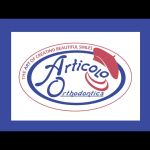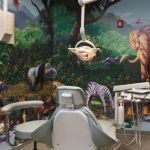When it comes to maintaining good oral health, one of the most important aspects is preventing plaque and tartar buildup on your teeth. Plaque, a sticky film of bacteria, forms on your teeth throughout the day, while tartar is the hardened form of plaque that can only be removed professionally by a dentist. If left untreated, plaque and tartar buildup can lead to gum disease, cavities, and even tooth loss. While visiting the dentist regularly is essential, there are also several ways to remove plaque and tartar at home. Let’s take a closer look at how you can tackle these dental issues and maintain your smile with ease.
1. Understanding Plaque and Tartar
Plaque is a thin, sticky layer of bacteria that forms on your teeth and gums. It is the primary cause of cavities, gum disease, and bad breath. Plaque forms when food particles mix with the bacteria in your mouth, creating a sticky film that clings to your teeth. If not removed regularly by brushing, plaque hardens into tartar, which can only be removed by a dentist or dental hygienist. Once tartar has developed, it becomes much more difficult to remove, and it can lead to serious dental issues if not addressed.
Tartar not only causes unsightly yellow or brown stains on your teeth but can also make brushing and flossing much more difficult. When tartar builds up along the gumline, it irritates the gums and can lead to gum disease, characterized by inflammation, bleeding, and even recession. Regularly removing plaque before it hardens into tartar is one of the best ways to maintain healthy teeth and gums.
2. Brushing Your Teeth Properly
The most effective way to remove plaque at home is by brushing your teeth thoroughly and regularly. Brushing removes food particles and bacteria, helping to keep your mouth clean. However, it's not just about brushing – it's also about how you brush. A lot of people make the mistake of brushing too hard or using the wrong technique, which can be ineffective or even damaging to their gums and enamel.
To properly brush your teeth, hold the toothbrush at a 45-degree angle to your gums and use gentle, circular motions. Make sure to brush all surfaces of your teeth, including the front, back, and chewing surfaces. Don't forget to brush your tongue as well, as it can harbor bacteria that contribute to plaque buildup. Brush for at least two minutes, twice a day, using fluoride toothpaste to help prevent plaque from forming. If you have difficulty reaching certain areas, consider using an electric toothbrush, which can be more effective at removing plaque.
3. Flossing to Reach Between Your Teeth
Flossing is another essential part of any effective oral hygiene routine. Brushing alone may not remove all the plaque and food particles from between your teeth and along the gumline. Flossing helps to reach these areas, where plaque often accumulates and can lead to tartar formation. By removing plaque and food debris from between your teeth, flossing reduces the chances of it turning into tartar.
To floss correctly, take about 18 inches of dental floss and wrap it around your middle fingers, leaving about two inches to work with. Gently slide the floss between your teeth, curving it around each tooth and moving it up and down to remove plaque. Be sure to floss every space between your teeth once a day, preferably before bedtime. If you're not comfortable using traditional floss, you can use floss picks or water flossers, which can also help to keep your teeth clean.
4. Using Mouthwash to Kill Bacteria
In addition to brushing and flossing, using an antimicrobial mouthwash can help to reduce plaque buildup and kill the bacteria that cause it. Mouthwash not only freshens your breath but also reaches areas of your mouth that may be missed by your toothbrush or floss. Some mouthwashes contain fluoride, which helps strengthen enamel and protect against plaque and tartar buildup. Others contain antibacterial ingredients, like chlorhexidine, that target the bacteria responsible for plaque formation.
When choosing a mouthwash, look for one that is alcohol-free, as alcohol can dry out your mouth and lead to other oral health problems. It’s best to use mouthwash after brushing and flossing to maximize its effectiveness. Swish the mouthwash around your mouth for about 30 seconds to one minute, making sure to cover all areas. Be sure not to swallow the mouthwash, and wait at least 30 minutes before eating or drinking to allow it to work.
5. Incorporating Plaque-Reducing Foods into Your Diet
Your diet plays a significant role in the buildup of plaque and tartar. Eating foods that are low in sugar and high in fiber can help reduce plaque accumulation and keep your teeth healthy. Foods like apples, carrots, and celery can naturally scrub your teeth while you eat, helping to remove plaque and food particles. Dairy products like cheese and yogurt are also beneficial because they contain calcium and phosphates, which help strengthen teeth and neutralize acids that contribute to plaque buildup.
On the other hand, sugary foods and drinks can promote plaque formation by feeding the bacteria in your mouth. Be mindful of your consumption of sugary snacks, sodas, and juices, and try to limit them to prevent plaque buildup. Drinking plenty of water throughout the day also helps wash away food particles and bacteria, keeping your mouth clean and reducing the chances of plaque buildup.
6. Consider Using At-Home Plaque Removal Tools
If you're looking for extra help in removing plaque and tartar at home, there are a variety of at-home tools and products available. Some people find electric toothbrushes or ultrasonic plaque removers to be particularly effective at breaking up plaque. These tools can be a great investment if you're looking for a deeper clean than what traditional brushing and flossing can provide.
Ultrasonic plaque removers use high-frequency vibrations to break up plaque and tartar, which can make it easier to remove stubborn buildup. While these devices are not a substitute for professional cleanings, they can help maintain your oral hygiene routine between visits to the dentist. If you're considering using a plaque remover at home, make sure to follow the manufacturer’s instructions carefully and consult with your dentist to ensure you're using the tool safely and effectively.
7. Professional Cleanings for Tough Tartar
While there are plenty of ways to manage plaque buildup at home, it’s important to remember that once plaque turns into tartar, it can only be removed by a dentist or dental hygienist. Professional cleanings are necessary to remove stubborn tartar that cannot be addressed with homecare methods. Tartar can accumulate in hard-to-reach areas, and a professional cleaning ensures that your teeth are thoroughly cleaned and that your gums remain healthy.
Your dentist may use a combination of scaling and polishing techniques to remove tartar and plaque from your teeth. They will also provide personalized recommendations for maintaining a plaque-free mouth and help you stay on track with your oral health. Depending on your individual needs, professional cleanings are usually recommended every six months, but some people may require more frequent visits if they’re prone to tartar buildup.
In summary, while it’s essential to take proper care of your teeth at home, including brushing, flossing, and using mouthwash, regular visits to the dentist are key to keeping plaque and tartar at bay. If you're looking to prevent plaque buildup, maintaining good habits and using the right tools can help keep your mouth healthy and your smile bright.
If you want to learn more about dental products or need personalized advice on oral care, visit [Dentistry Toothtruth] for expert tips and recommendations.







 Deem Thomas E DDS5.0 (4 review)
Deem Thomas E DDS5.0 (4 review) Sung Lee Orthodontics5.0 (108 review)
Sung Lee Orthodontics5.0 (108 review) Articolo Orthodontics5.0 (4 review)
Articolo Orthodontics5.0 (4 review) Elmwood Park Cosmetic Dentistry5.0 (1 review)
Elmwood Park Cosmetic Dentistry5.0 (1 review) Children's Dental Health of Plymouth Meeting4.0 (352 review)
Children's Dental Health of Plymouth Meeting4.0 (352 review) Lakeshore Family Dentistry: Jason P. Ross, Ellen D. Jacobson5.0 (3 review)
Lakeshore Family Dentistry: Jason P. Ross, Ellen D. Jacobson5.0 (3 review) The Importance of Oral Health Education During Pregnancy for a Healthy Pregnancy
The Importance of Oral Health Education During Pregnancy for a Healthy Pregnancy Best Tips for Brushing Your Teeth Properly for Healthy Gums: Essential Techniques for Oral Health
Best Tips for Brushing Your Teeth Properly for Healthy Gums: Essential Techniques for Oral Health Why Skipping Dental Checkups Can Lead to Bigger Oral Health Problems
Why Skipping Dental Checkups Can Lead to Bigger Oral Health Problems Advantages of Porcelain Dental Restorations
Advantages of Porcelain Dental Restorations How Can Diabetes Cause Tooth and Gum Problems? Preventing and Managing Oral Health Issues
How Can Diabetes Cause Tooth and Gum Problems? Preventing and Managing Oral Health Issues Healthy Habits for Promoting Good Oral Health and Hygiene: Tips for a Healthy Smile
Healthy Habits for Promoting Good Oral Health and Hygiene: Tips for a Healthy Smile